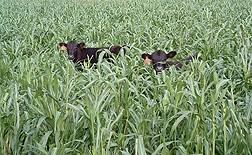One of the questions I am often asked is how much agriculture contributes to the emission of greenhouse gases into the atmosphere. It’s a difficult question because you need to keep track of a lot of different things, like how land is used, what kinds of chemicals are used, what management methods are in place, and how much water is used (diesel pumps put out greenhouse gases too). But it is even more complicated when you have to consider the costs of transporting food to market and how food waste is disposed of. Other things like how livestock are fed (it varies a lot depending on the country) can also make a difference. So estimates of how much agriculture contributes to greenhouse gases has generally ranged from about 10 to 24 percent of all emissions.
A new study published this month in Nature has taken a more systematic approach to accounting for all the greenhouse gas emissions from clearing the land to managing the crops and livestock to transporting it to market and then disposing of the remains. This start-to-finish tally shows that when you take everything into account, agriculture is responsible for about 1/3 of all greenhouse gas emissions across the world. This keeps in mind that livestock production in the US, for example, is much more efficient than in other countries, and keeps track of it for the entire globe to account for differences between countries. You can read the full article at https://www.nature.com/articles/s43016-021-00225-9 to see how they kept track of all of the sources of carbon dioxide, methane, and other greenhouse gases. This is why it is so important to include agricultural producers in the management of greenhouse gas emissions, since they are involved in them in so many ways and must have a seat at the table to provide guidance into the best ways to reduce our emissions.
